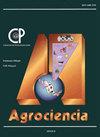墨西哥圣路易斯市两个地区破坏者与蜜蜂种群强度的相互作用POTOSÍ
IF 0.5
4区 农林科学
Q4 AGRICULTURE, MULTIDISCIPLINARY
引用次数: 0
摘要
螨虫破坏者是世界范围内养蜂业最大的威胁之一。了解螨虫的行为和在不同环境条件下有利于其发展的因素,以及这些因素的影响程度,对于制定螨虫整体管理战略至关重要。以墨西哥圣路易斯Potosí为研究对象,在春季和夏秋季两个花期,对40个蜂箱进行了监测,目的是分析蜜蜂种群强度变量与破坏者侵染率之间的相互作用。变量分析采用Pearson相关分析和时间重复测量方差分析(p≤0.05)。害虫侵害程度与蜂蜜储量(+0.58)和花粉储量(+0.62)呈极显著相关,与卫生行为呈负相关(-0.65)。春季与夏、秋两季的害虫侵害率差异不显著,而春季的食物(蜂蜜和花粉)储备量在夏、秋两季具有统计学上的优势。卫生行为仅在花季开始时有统计学差异;夏秋时节,这里的景色更美。然而,这种差异并没有随着时间的推移而保持。本文章由计算机程序翻译,如有差异,请以英文原文为准。
Varroa destructor: ITS INTERACTION WITH Apis mellifera COLONY STRENGTH IN TWO LOCALITIES OF SAN LUIS POTOSÍ, MEXICO
The mite Varroa destructor is one of the greatest threats to the apiculture sector worldwide. Generation of knowledge on its behavior and of the factors that favor its development under different environmental conditions, as well as the level of influence of these factors, is essential to the development of strategies for integral management of the mite. With the objective of analyzing the interaction between the variables of Apis mellifera colony strength and the percentage of V. destructor infestation, a group of 40 beehives were monitored during two flowering seasons, spring and summer-fall, in San Luis Potosí, Mexico. The variables were analyzed using the Pearson correlation analysis as well as an analysis of variance with repeated measures in time (p ≤ 0.05). The level of V. destructor infestation was significantly related to the quantity of honey (+0.58) and pollen (+0.62) reserves and negatively correlated with hygienic behavior (-0.65). The percentage of V. destructor infestation in spring was not significantly different from that in summer-fall, while the quantity of food (honey and pollen) reserves in spring were statistically superior as of the second half of the season. Hygienic behavior had statistical differences only at the beginning of the flowering seasons; it was superior in summer-fall. However, this difference was not maintained over time.
求助全文
通过发布文献求助,成功后即可免费获取论文全文。
去求助
来源期刊

Agrociencia
农林科学-农业综合
CiteScore
0.50
自引率
33.30%
发文量
51
审稿时长
18-36 weeks
期刊介绍:
AGROCIENCIA is a scientific journal created and sponsored by the Colegio de Postgraduados. Its main objective is the publication and diffusion of agricultural, animal and forestry sciences research results from mexican and foreign scientists. All contributions are peer reviewed. Starting in the year 2000, AGROCIENCIA became a bimonthly and fully bilingual journal (Spanish and English versions in the same issue). Since 2007 appears every month and a half (eight issues per year). In addition to the printed issues, the full content is available in electronic format.
 求助内容:
求助内容: 应助结果提醒方式:
应助结果提醒方式:


